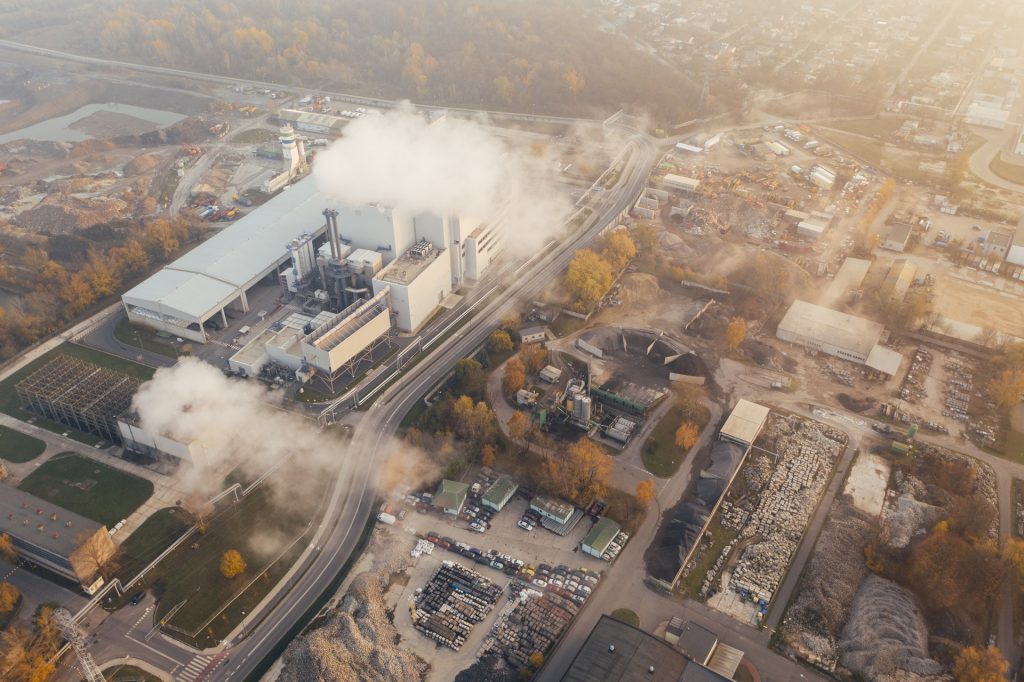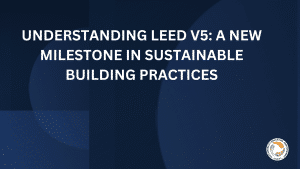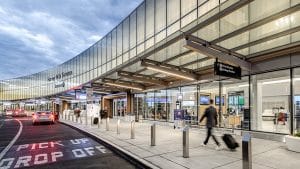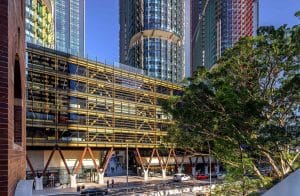We are all aware of how climate change is impacting the lives of not just human beings, but millions of species of plants and animals too. We are living in an era when erratic weather patterns are resulting in food shortages across the globe, polar ice caps are melting resulting in sea level rise thereby threatening the lives of millions living in low-lying coastal areas, extreme weather conditions are causing natural calamities like wildfires, floods, droughts etc.
In short, climate change is bearing down upon us as a monster, unleashing unprecedented devastation. While the future looks particularly grim, there is still hope for mankind if we take urgent steps to limit our greenhouse gas emissions.
What exactly is climate change?
Climate change is also known as global warming. It refers to an increase in the surface temperature of the earth due to the release of greenhouse gases. Almost 97% of climate scientists believe that our planet’s changing climate is to be attributed to human activities.
The main culprit is said to be the human use of fossil fuels like coal, oil and gas. When burned, these fossil fuels release carbon dioxide and other greenhouse gases into the earth’s atmosphere. These gases trap heat, thereby raising the global land and sea temperatures.
Other human activities, such as agriculture and deforestation, also contribute to the proliferation of greenhouse gases that cause climate change.
It should be noted that greenhouse gases occur naturally and are essential to the survival of humans and millions of other living things, by keeping some of the sun’s warmth from reflecting back into space and making Earth livable. But after more than a century and a half of industrialization, deforestation, and large scale agriculture, quantities of greenhouse gases in the atmosphere have risen to record levels not seen in three million years. As populations, economies and standards of living grow, so does the cumulative level of greenhouse gas (GHGs) emissions.
Now even small increases in earth’s temperature caused by climate change can have severe effects. The earth’s average temperature has gone up 1.4° F over the past century and is expected to rise as much as 11.5° F over the next. That might not seem like a lot, but the average temperature during the last Ice Age was about 4º F lower than it is today! This shows how catastrophic it would be for our planet and its inhabitants if global warming continues at the present rate.
How do buildings contribute to the climate crisis?
Buildings massively impact our environment- both directly and indirectly. During their construction, occupancy, renovation and even demolition, buildings use huge amounts of energy, natural resources and raw materials, they generate waste, and emit harmful carbon emissions.
In fact, according to the United Nations Environment Program, buildings consume almost 36% of the global energy and account for almost 40% of the global carbon dioxide emissions annually.
Building emissions, as typically measured, are a combination of two things. First is day-to-day energy use, known as the “operational carbon emissions” that comes from powering lighting, heating, and cooling. Globally, building operations account for about 28% of emissions annually.
Second is the amount of carbon generated through manufacturing building materials, transporting materials to construction sites, and the actual construction process—what’s known as the “embodied carbon of a building,” which accounts for about one quarter of a building’s total lifecycle carbon emissions. Globally, the embodied carbon of buildings account for about 11% of emissions.
To meet the goals of the Paris Climate Agreement under which the participating countries aim to limit global temperature rise to 1.5 degrees Celsius, the built environment’s energy intensity will have to improve by 30% by 2030, according to UN Environment. Globally, the energy intensity of the building sector is improving by about 1.5% every year.
However, the number of buildings is also on the rise as the global floor area grows by about 2.3% annually. This offsets some of those energy intensity improvements. Carbon emissions related to buildings are expected to double by 2050 if action at scale does not occur.
Thankfully, the building sector is looking for responsible and efficient ways to construct and maintain buildings by making them more energy-efficient and limiting the carbon emissions. This has led to the creation of green building rating systems that prompt the buildings to improve their environmental performance through sustainable design and operations.
What is LEED?
In 2000, the U.S. Green Building Council (USGBC) developed and released guidelines for implementing practical green building solutions through its Leadership in Energy and Environmental Design (LEED) rating system for new buildings. Since that first release, LEED has continued to grow in prominence and to include rating systems for existing buildings and entire neighborhoods.
Today, LEED is an internationally recognized green building certification system that provides third-party verification that a particular building or complex was designed and constructed keeping in mind the following parameters:
- Regional Priority
- Design Innovation
- Education and Awareness
- Location and Transportation
- Sustainable Sites
- Energy
- Materials and Resources
- Indoor Environmental Quality
- Operations and Maintenance Costs
- There are four different levels of LEED certification –
- Certified (40–49 points)
- Silver (50–59 points)
- Gold (60–79 points)
- Platinum (80+ points)
The LEED Platinum level certification achieves the highest honor and the LEED Certified level achieves basic, fundamental performance. Regardless of the certification level achieved, all projects must meet mandated pre-requisites mentioned above.
Further, in LEED, buildings get certified under 5 different LEED rating systems:
- LEED AP Building Design + Construction – This rating system includes guidelines for new buildings and old buildings undergoing major renovations.
- LEED AP Operations + Maintenance – This category can be used by building owners and operators to measure operations and maintenance as well as make minor improvements.
- LEED AP Interior Design + Construction – This rating system was designed specifically for tenants leasing a portion of a larger building.
- LEED AP Neighborhood Development – This category integrates the principles of smart growth, urbanism, and green building into the first national program for neighborhood design.
- LEED AP Homes – This was specifically designed for single and multi-family residential structures that are three stories or less.
LEED Certification
The first step towards achieving LEED certification is to identify your project type. Once you have done that, the process and application to become certified are relatively straightforward.
However, the challenging part is to create a facility that meets all sustainable prerequisites and playing the waiting game for your application to get approved. The LEED certification process requires a set list of mandatory requirements and involves four main steps:
Register – Register your project by completing key forms and submitting payment. You’ll want to make sure that your project meets all of the LEED Minimum Program Requirements. Building projects pursuing LEED 2009 certification must:
- Comply with environmental laws
- Be a complete, permanent building
- Use a reasonable site boundary
- Comply with minimum floor area requirements
- Comply with minimum occupancy requirements
- Commit to sharing whole-building energy and water usage data
- Comply with a minimum building area to site area ratio
There are two online portals available for registration – Arc and LEED Online. Select the portal your project should use to register and pursue LEED certification accordingly.
Application – Once you’ve got your project registered, the next step would be to collect and submit the appropriate documentation so that Green Business Certification Inc (GBCI) may review your project. Working with your project team, you will identify LEED credits that you want to pursue and assign them to project team members. The team members will then collect information, perform calculations and analysis, and prepare documentation demonstrating your achievement of the prerequisites and your selected credits.
Once your application is prepared, upload your completed materials and make sure to perform a rigorous quality check of your entire application before submitting for review.
Don’t forget to pay your certification review fee!
Review – Once you have submitted the application and paid the certification fee, your LEED application is reviewed by GBCI thoroughly. GBCI will respond with its preliminary review within 20-25 business days, indicating which prerequisites and credits are awarded and which are marked as pending, with a request for more information.
You can accept the preliminary review results as final if you are satisfied, or prepare new or revised documentation or attempt additional credits before submitting for final review.
Once your final application review is complete, your project team can either accept or appeal GBCI’s final review report or request an additional supplemental (appeal) review.
Certify – The last but the most crucial step is, of course, being awarded the final certification report. Although the process may seem long and daunting, it is well worth having that seal of recognition for your efforts in being a greener building.
How do LEED-certified buildings contribute to fight against climate change?
The LEED process addresses a structure’s planning, design, construction, operations and end of life as well as considers energy, water, indoor environmental quality, materials selection and location. Green buildings reduce landfill waste, enable alternative transportation use and encourage retention and creation of vegetated land areas and roofs.
LEED rewards thoughtful decisions about building location, with credits that encourage compact development and connection with transit and amenities. When a building consumes less water, the energy otherwise required to withdraw, treat and pump that water from the source to the building are avoided. Additionally, less transport of materials to and from the building cuts associated fuel consumption.
Here are some of the ways that LEED weighs the various credits and strategies so that LEED projects can mitigate their contribution to global climate change:
- GHG Emissions Reduction from Building Operations Energy Use: To target energy use reductions directly associated with building operations. This includes all building systems and operations within the building or associated grounds that rely on electricity or other fuel sources for energy consumption.
- GHG Emissions Reduction from Transportation Energy Use: To target energy use reductions associated with the transportation of building occupants, employees, customers, visitors, business travel, etc.
- GHG Emissions Reduction from the Embodied Energy of Materials and Water Use: To target GHG-emissions reductions associated with the energy use and processes required in the extraction, production, transportation, conveyance, manufacturing, assembly, distribution, use, post-treatment, and disposal of materials, products and processed water. Any measures that directly reduce the use of potable water, non-potable water, or raw materials will indirectly reduce energy as well because of the embodied energy associated with these product life cycles.
- GHG Emissions Reduction from a Cleaner Energy Supply: To target actions and measures that support a cleaner, less GHG-emissions intensive energy supply and a greater reliance on renewable sources of energy.
- Global Warming Potential Reduction from Non-Energy Related Drivers: To address the non-energy related climate change drivers and identify actions that reduce these contributions to climate change (e.g. land use changes, heat island reduction, reforestation, refrigerant purchases).
Join us for a FREE webinar on Climate Change and Health as Dr. Schiller explores the topic and shares her wisdom. LIVE December 9th 12-1PM Eastern Time. REGISTER NOW
With inputs from:
https://www.curbed.com/2019/9/19/20874234/buildings-carbon-emissions-climate-change
https://www.usgbc.org/articles/how-leed-combats-climate-change











